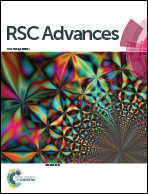Thermal-tolerant polymers with antireflective and hydrophobic grooved subwavelength grating surfaces for high-performance optics
Abstract
We report thermal-tolerant polymer films integrated with antireflective and hydrophobic grooved subwavelength gratings (G-SWGs), which are fabricated by a soft imprint lithography from silicon molds with conical SWGs, for high-performance optics. For the poly-dimethylsiloxane (PDMS) polymer films with the G-SWGs at one- and both-side surfaces, their optical properties are investigated for different periods, exhibiting efficient broadband and wide-angle antireflection behavior with light scattering. To simply demonstrate their feasibility in optical and optoelectronic systems, the one-side G-SWGs PDMS film with a short period of 380 nm is laminated on indium tin oxide-coated glass (i.e., ITO glass) and polyethylene terephthalate (PET) substrates. This film effectively enhances the transmittance (or suppresses the reflectance) of both the bare ITO glass and PET substrates in wide ranges of wavelengths and incident angles. Additionally, it shows not only a relatively strong thermal durability at temperatures less than 180 °C, but also a hydrophobic surface with high water contact angle of around 140° (i.e., self-cleaning ability).


 Please wait while we load your content...
Please wait while we load your content...